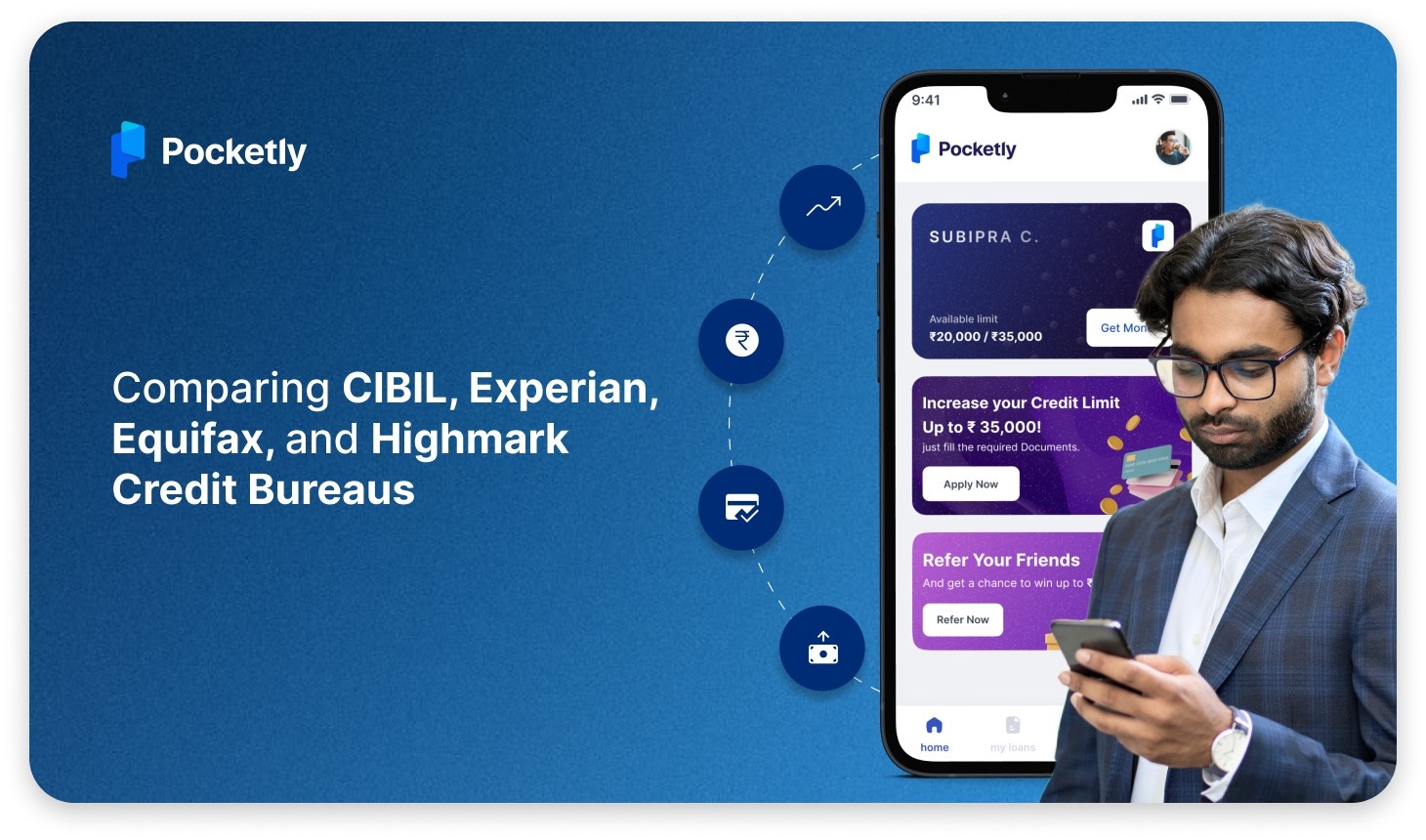
When you apply for a personal loan, the approval process doesn’t end with a simple "yes" from the lender. Before the funds reach your account, you’ll receive a crucial document—the personal loan sanction letter. This letter isn’t just a formality; it’s your official confirmation that the loan has been approved, along with all the essential details you need to know.
So, why does this letter matter? And how can it help you make informed financial decisions? Let’s break it down in a simple, easy-to-understand way.
What is a Personal Loan Sanction Letter?
A personal loan sanction letter is an official document issued by the lender confirming that your loan has been approved. It outlines key details such as the loan amount, interest rates, tenure, repayment structure, and all associated terms and conditions.
Think of it as the blueprint of your loan agreement—it provides a clear breakdown of what you’re committing to before you move forward with the final documentation and loan disbursal.
Purpose of a Sanction Letter in Loan Processing
The sanction letter plays a very important role in the loan approval process, acting as a bridge between loan approval and disbursal. Here’s why it matters:
- Confirms Loan Approval – It serves as an official confirmation that your loan request has been approved, detailing the terms of the agreement.
- Ensures Transparency – The letter clearly defines loan terms, interest rates, repayment tenure, and additional charges, helping borrowers make informed decisions.
- Allows Comparison & Negotiation – Once you have a sanction letter, you can compare offers from different lenders and negotiate better terms before accepting the loan.
- Sets the Timeline for Disbursal – The letter includes a validity period, within which the borrower must accept the loan offer before it expires.
- Provides a Legal Reference – If any disputes arise in the future, the sanction letter acts as a legal document, ensuring that both the borrower and lender adhere to the agreed terms.
By understanding the role of the sanction letter, you can review, plan, and proceed confidently, knowing exactly what to expect from your loan agreement.
Components of a Personal Loan Sanction Letter
A personal loan sanction letter contains essential details about your approved loan. It serves as a formal agreement between you and the lender, outlining the terms and conditions that will govern your loan repayment. Understanding these components ensures that you make informed financial decisions and avoid surprises later.
1. Sanctioned Loan Amount & Application Tracking
What is it?
- The sanctioned loan amount is the approved sum you can borrow, determined by your eligibility, creditworthiness, and income stability.
- The application tracking number allows you to monitor the progress of your loan approval and disbursal.
How does it work?
- Lenders assess your repayment capacity, existing liabilities, and credit history to decide the sanctioned amount.
- Once approved, you receive a tracking ID or reference number to check the status of your loan application.
Example: You applied for a ₹3,00,000 personal loan, but based on your income and credit score, the lender approved ₹2,50,000. The sanction letter will mention ₹2,50,000 as the sanctioned amount, along with a tracking number.
2. Interest Rate Details: Fixed or Variable
What is it?
- The interest rate determines the total cost of borrowing and is either fixed or floating.
- A fixed interest rate remains constant throughout the loan tenure, while a floating rate fluctuates based on market conditions.
How does it work?
- Fixed rates provide predictability, ensuring your EMI stays the same.
- Floating rates may increase or decrease over time, affecting your monthly EMI.
Example: If your loan sanction letter states a fixed interest rate of 12% per annum, your EMI won’t change. However, if it states a floating rate linked to RBI’s repo rate, your interest rate may fluctuate.
3. EMI Amount Specifications
What is it?
- Your Equated Monthly Installment (EMI) is the fixed amount you need to pay every month to repay your loan.
- It consists of both principal and interest components.
How does it work?
- The loan tenure and interest rate determine your EMI.
- The sanction letter clearly mentions the EMI amount you must pay throughout the loan period.
Example: If you take a ₹2,00,000 loan for 2 years at 12% interest, your EMI may be around ₹9,400 per month. This amount will be specified in the sanction letter.
4. Loan Tenure Duration
What is it?
- The loan tenure is the period over which you will repay the loan, typically ranging from 12 to 60 months.
How does it work?
- A shorter tenure means higher EMIs but lower overall interest paid.
- A longer tenure results in lower EMIs but increases the total interest cost.
Example: A ₹5,00,000 loan for 2 years may have an EMI of ₹23,600, while the same loan for 5 years may have an EMI of ₹11,200. The sanction letter will specify the chosen tenure.
5. Processing Fees & Other Charges
What is it?
- The processing fee is a one-time charge deducted before loan disbursal. Other charges may include late payment penalties or foreclosure fees.
How does it work?
- Lenders typically charge 1% to 8% of the sanctioned amount as a processing fee.
- If you miss an EMI, late payment charges may apply.
- If you prepay the loan before the tenure ends, a foreclosure fee may be levied.
Example: If your loan amount is ₹3,00,000 and the processing fee is 2%, ₹6,000 will be deducted before disbursal, and you’ll receive ₹2,94,000.
6. Terms and Conditions, Including Prepayment Charges
What is it?
- The terms and conditions include repayment guidelines, default penalties, and prepayment clauses.
- Some lenders might charge a fee if you are about to repay the loan before the tenure ends.
How does it work?
- Prepayment fees can range from 0% to 5% of the outstanding loan amount.
- If allowed, you can clear the loan early and save on interest costs.
Example: If you decide to repay a ₹1,00,000 outstanding loan balance before the tenure ends and there’s a 3% prepayment charge, you’ll need to pay ₹1,03,000 instead of ₹1,00,000.
7. Validity Period of the Sanction Letter
What is it?
- The validity period is the timeframe within which you must accept the loan offer before it expires.
How does it work?
- Typically, sanction letters remain valid for 30 to 90 days.
- If you don’t proceed within this period, the lender may withdraw or revise the loan offer.
Example: If your loan is sanctioned on 1st January with a 30-day validity, you must accept it before 31st January. Failing to do so may require you to reapply or renegotiate the terms.
Before signing the final agreement, take the time to go through each component, clarify doubts with your lender, and ensure you’re comfortable with the terms. A well-understood sanction letter leads to stress-free loan management and smarter financial planning.
Importance of a Personal Loan Sanction Letter
By having a personal loan sanction letter, you get a detailed breakdown of repayment obligations, interest rates, processing fees, and other crucial loan terms. It also protects both the borrower and lender, ensuring a transparent and legally binding agreement.
Here’s why your personal loan sanction letter is essential:
1. Financial Protection: Secure Understanding of Loan Terms
- Ensures you are totally aware of all costs associated with the loan, including EMIs, interest rates, and repayment tenure.
- Helps you budget effectively by providing a clear repayment schedule.
- Prevents lenders from changing the loan terms after disbursal.
Why it matters: Knowing your exact loan terms reduces financial uncertainty and helps you avoid unmanageable debt.
2. Transparency in Transactions: Ensures Clarity Between Parties
- Clearly states interest rates, EMI amounts, tenure, and additional charges.
- Prevents hidden fees or unexpected changes in loan terms.
- Allows borrowers to compare different loan offers before committing.
Why it matters: With a clear agreement in place, you won’t have to worry about misunderstandings or disputes with your lender.
3. Peace of Mind: Offers Confirmed Approval for Planning
- Assures that the loan has been officially approved.
- Allows you to plan expenses, business investments, or major purchases confidently.
- Gives a timeframe within which you can accept and proceed with disbursal.
Why it matters: A sanction letter eliminates uncertainty and ensures you have access to funds when needed.
4. Legal Assurance and Documentation Reliability
- Serves as a legally binding document, protecting both lender and borrower.
- Acts as a reference point in case of future disputes or clarifications.
- Ensures that the lender follows the approved loan terms without alterations.
Why it matters: In case of any disagreement, the sanction letter acts as proof of agreed terms, ensuring fairness for both parties.
5. Flexibility to Compare & Negotiate Terms
- Once you have a sanction letter, you can compare loan offers from multiple lenders.
- Some lenders may allow negotiations on interest rates or tenure before finalising the agreement.
- Ensures you choose the best financial option rather than settling for the first offer.
Why it matters: With a sanctioned loan offer, you have more control over loan terms and can make an informed decision.
6. Protection Against Misleading Practices
- Prevents lenders from changing loan conditions after approval.
- Ensures all loan terms are clearly outlined in writing before you accept.
- Protects against fraudulent lenders by verifying official loan approvals.
Why it matters: You can be confident that your loan is legitimate, transparent, and free from hidden traps.
A personal loan sanction letter is a must-read document that guarantees financial clarity, legal protection, and peace of mind.
Documents Required for Issuing a Personal Loan Sanction Letter
Before a lender issues a personal loan sanction letter, you’ll need to provide certain documents for identity verification, income assessment, and creditworthiness evaluation. These documents help lenders ensure that you meet the eligibility criteria and you can repay the loan without financial strain.
1. Photo Identification & Passport-Size Photos
Accepted Documents:
- Aadhaar Card
- Passport
- Voter ID
- Driving License
Why it matters: Ensures that the loan is being processed under the correct applicant’s name, preventing identity fraud.
2. Identity and Address Proofs
Accepted Documents:
- Aadhaar Card
- PAN Card (for identity verification)
- Utility Bills (Electricity, Water, or Gas – recent)
- Rental Agreement or Property Ownership Documents
Why it matters: Lenders need to confirm your identity and address to reduce the risk of fraudulent applications.
3. Income Proof (Salary Slips & Bank Statements)
Accepted Documents:
- Salary slips (last 3 to 6 months) for salaried individuals
- Bank statements (last 6 months) to track income patterns
- Form 16 (if applicable) for salaried employees
Why it matters: Demonstrates your ability to repay the loan within the specified tenure.
4. Employment Proof & Status Verification
Accepted Documents:
- Employment ID card
- Offer letter or appointment letter from current employer
- Business registration documents (for self-employed individuals)
Why it matters: Lenders need to confirm that you have a reliable source of income to repay the loan on time.
5. Credit Report & Income Tax Return (ITR) Form
Accepted Documents:
- Latest CIBIL or Experian credit report
- ITR (last 1-2 years) for self-employed borrowers
Why it matters: A good credit score (750+) increases approval chances, while an ITR ensures you have a verifiable income source.
By submitting complete and correct information, you can get your personal loan sanction letter hassle-free and move one step closer to securing your loan!
Legal and Financial Implications of the Sanction Letter
A personal loan sanction letter defines the loan terms, ensures transparency, and prevents unexpected changes that could impact your repayment. By having everything in writing, you can avoid disputes, misunderstandings, and unfair modifications, making your borrowing experience more secure and predictable.
1. Ensures Clarity and Prevents Disputes
Why It’s Important
- Clearly outlines key details such as the loan amount, interest rate, tenure, and fees, leaving no room for confusion.
- Ensures that the lender cannot change loan terms after approval without your consent.
- Helps borrowers confirm that the EMI structure matches their repayment capacity.
Best Practices for Borrowers
- Review all terms carefully before signing.
- Look out for hidden charges and clarify any unclear conditions.
- Ensure that the EMI breakdown aligns with your repayment plan.
Example: If a lender increases the interest rate after issuing the sanction letter, you can use the letter as proof to dispute the change.
2. Provides a Reference for Any Misunderstandings
Why It’s Important
- Acts as written proof of the agreed terms, preventing misinterpretations later.
- Helps resolve conflicts if there are discrepancies in loan repayment, processing fees, or deductions.
- It can be used in legal matters if the lender does not honour the agreed conditions.
Best Practices for Borrowers
- Keep a copy of the sanction letter for your records.
- Compare any deductions or charges with the ones mentioned in the document.
- Raise concerns immediately if you notice any inconsistencies.
Example: If a lender deducts a higher processing fee than stated, the sanction letter allows you to challenge the extra charge.
3. Protects the Interests of Both Borrower and Lender
Why It’s Important
- Ensures borrowers stick to their repayment obligations, reducing the risk of default.
- Prevents lenders from making unfair changes to the loan terms after approval.
- Creates a structured and legally sound agreement that benefits both parties.
Best Practices for Borrowers
- Carefully read all clauses before accepting the loan.
- Clarify any uncertain terms with the lender before proceeding.
- Ensure that the final loan agreement matches the sanction letter.
Example: If a lender suddenly introduces a prepayment penalty, the sanction letter serves as evidence that prepayment was originally allowed without charges.
Do you need a secured loan? With Pocketly, you get your loan agreement and sanction letter via email upon disbursal. Plus, every repayment comes with a tax invoice and receipt—ensuring full transparency.
Here’s how you can benefit from Pocketly and its standout features:
- Instant Approvals and Quick Disbursal:
- Pocketly prides itself on fast approvals, getting you the money you need almost instantly.
- Flexible Loan Amounts:
- Whether you need ₹1,000 for a small expense or ₹25,000 for something more significant, Pocketly offers a range of loan options to suit your needs.
- Minimal Documentation:
- Forget long forms and endless paperwork. Pocketly requires only essential documentation, making the process smooth and hassle-free.
- Transparent Fees:
- With Pocketly, there are no hidden charges. You’ll know exactly what the interest and fees are upfront, allowing you to plan confidently.
- Credit-Friendly:
- Even if your credit score isn’t ideal, Pocketly gives you a chance. It’s designed to be accessible, making it a great option when traditional lenders might turn you down.
- Flexible Repayment Options:
- Choose a repayment schedule that suits you, with options designed to fit comfortably within your budget.
Also, read our detailed guide on Steps in the Personal Loan Application Process.
Conclusion
A personal loan sanction letter gives you a clear understanding of your loan terms, and eventually, it protects you from any unexpected changes, and this ensures a smooth borrowing experience. By reviewing it carefully, you may be able to avoid hidden charges, plan your finances better, and make the right decisions before committing to a loan.
Taking a loan is a big decision, and understanding your sanction letter helps you avoid hidden charges and plan better. And if you ever need an instant personal loan, Pocketly makes borrowing quick, hassle-free, and flexible. With quick approvals, minimal paperwork, and flexible repayment options, Pocketly makes borrowing fast, easy, and stress-free.
Download the Pocketly app today and get instant access to funds!


















